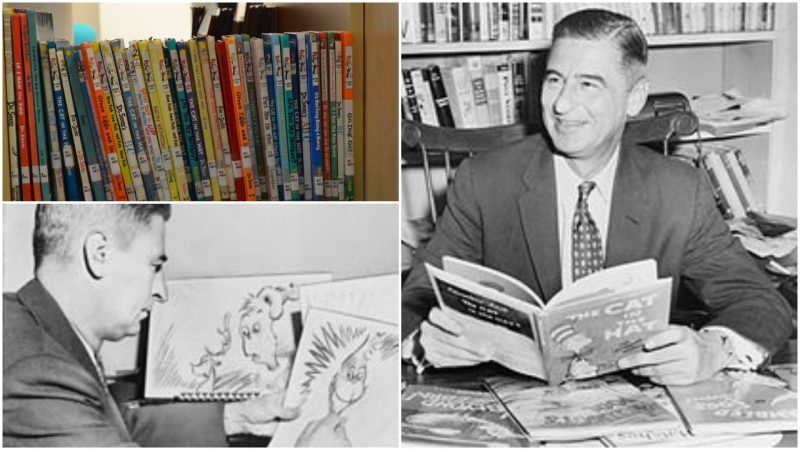The beloved writer and cartoonist wrote over 60 throughout his lifetime. ‘The Cat in the Hat,’ ‘Green Eggs and Ham’, ‘Horton Hears a Who’, and many more, still bring joy to the readers even after childhood.
Dr. Seuss himself has had quite the adventurous life, much like his books.The first book that he published under the “Dr. Seuss” name was ‘And to Think That I Saw It on Mulberry Street’ in 1937, the same street in his hometown.
It was rejected 27 times before Vanguard Press published it. His writing style, witty rhymes, and poetic meters are his work’s most distinctive features.
Theodor Seuss Geisel, born on March 2, 1904, in Springfield, Massachusetts, was the son of Theodor Robert Geisel, a brewmaster, and Henrietta Seuss Geisel. Red Smith, his English teacher at Springfield Public Schools, supported and helped Seuss in writing his stories.
Supported him in his jokes, and articles, as he showed great talent and quickly got better as time passed. Soon, he became editor of Central High’s newspaper, the Central Recorder.
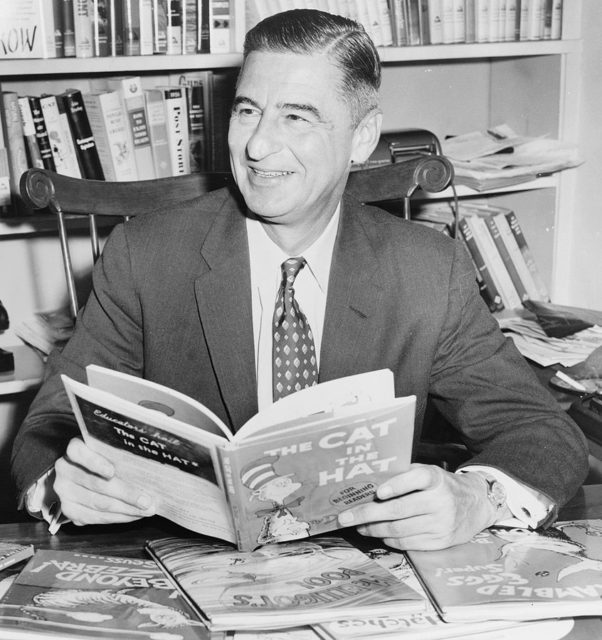
He attended Dartmouth College and became chief editor of ‘Jack-O-Lantern.’, the school magazine. Unfortunately, he was kicked out of the magazine staff because he got caught drinking in the college dormitory. Nevertheless, he managed to get away with it by publishing works under his “Dr. Seuss” pseudonym.
After graduating with a Liberal Arts Degree, he went to Oxford University for English Literature in 1925, before deciding to drop out. There he met Helen Marion Palmer, a petite, well-mannered young woman, and his future wife.
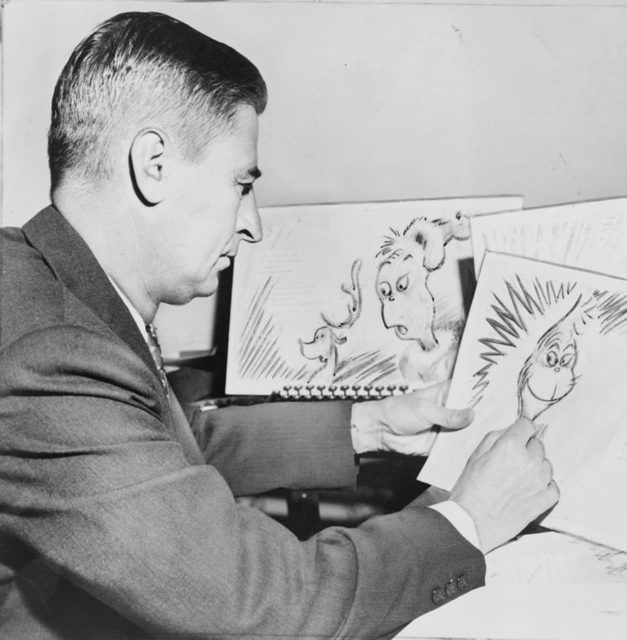
Geisel had a short attention span during school, so he would doodle to pass the time. Palmer noticed his artistic imagery and suggested he focused on illustrating, rather than literature.
Seuss loved the idea and began to love her as well. The humorous story behind their engagement is just as amusing as Seuss’ books.
He and Helen rode a motorcycle one day when Dr. Seuss thought that this would be a perfect time to propose to his future wife. When she said yes, the excited writer ran directly into a ditch, much to their amusement, and they were wed in 1927, allegedly uninjured.
Sadly, the love life of Seuss and Helen Palmer was a tragic one. While Seuss was a prominent writer, he was not a faithful man.
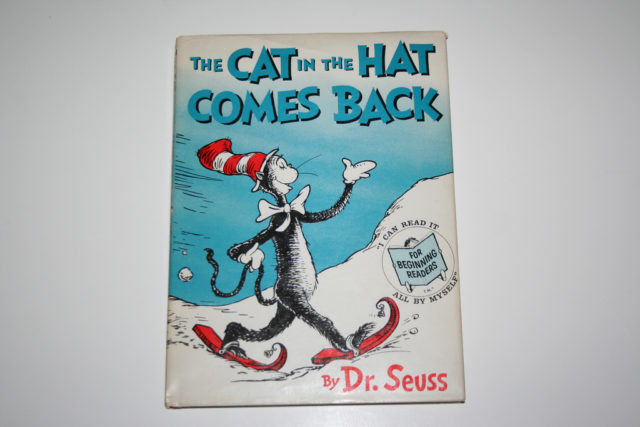
He had an affair with their house friend, Audrey Stone Diamond. Helen, who was crippled by cancer, could not take the emotional pain from Seuss’ adultery. In October 1967, Helen committed suicide and Geisel heartlessly married Diamond the following year.
Making ends meet was hard during the Great Depression Era, as he was struggling along with his wife to make money.
He worked for various companies, on a Schaefer Beer poster, Standard Oil advertising, Narragansett Brewing Company and many others. His ad for the Flit insecticide became very famous, and the “Quick, Henry, the Flit!” catchphrase was a hit in the US.
At the start of World War II, Seuss started drawing cartoons with political backgrounds for PM Magazine. He was too old to be drafted, but he made animated propaganda films and military posters that vigorously opposed fascism.

After the war, Seuss and his wife purchased an old observation tower in La Jolla, California. There he would tirelessly focus on work, writing ‘If I Ran the Zoo’ and ‘Horton Hears a Who!’.
Dr. Seuss’ career met a major turning point for the better. Houghton Mifflin and Random House asked Seuss to write a children’s book using only 220 words.
Because of a 1954 article in a Life Magazine that criticized illiteracy among children, Dr. Seuss was obliged to write books that would be “more fun” for children. The result was Seuss’ most famous work, ‘The Cat in the Hat’ and the book cemented Dr. Seuss career as a writer.
It was lauded for it’s simple, yet powerful delivery, content, and writing style that was appealing to children. The simplified vocabulary and charming wordplay quickly became Seuss’ weapon of choice.
His later works include the popular ‘Green Eggs and Ham’, and ‘How the Grinch Stole Christmas.’At one time, he had the honor of working with everyone’s favorite cartoonist Chuck Jones. Together, they adapted The Grinch into an animated film.
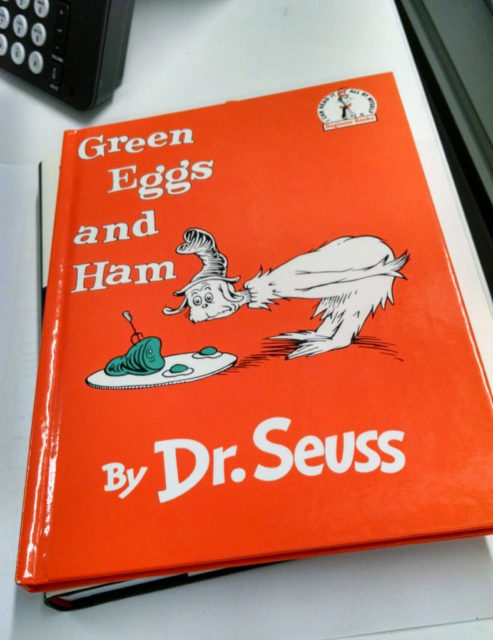
Dr. Seuss died on September 24, 1991, at the age of 87, in La Jolla, California. The irony is that Dr. Seuss had no children of his own, and regarding this, he once jokingly said: “You have ’em; I’ll entertain ’em.” Many of his books expressed and brought up many critical issues concerning social and political views.
His book ‘The Lorax’ explored environmentalism and anti-consumerism, ‘Horton Hears a Who!’, reflects on anti-isolationism and internationalism, while ‘How the Grinch Stole Christmas!’ criticized consumerism during the Christmas holidays. Seuss’ legacy lives on, and he is remembered as one of the greatest children’s writers in literature.
